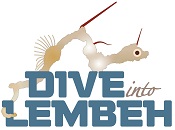The judging process
Hints and tips for competition success!
Judging process
A quality judging process is the key DNA of UPY. In an age when most underwater contests are judged online - often with the named judges seeing only the final round of images and usually with little or no discussion between the judges - UPY is proudly old school.
UPY brings all the judges together in one room, with all of them looking at the same screen and seeing every single image that is entered. Then we give them time. Time to view images multiple times, time to study the photos properly, time to discuss their favourites and time to change their mind - all with the goal of producing the most jaw dropping collection of winners.
UPY gets lots of amazing images and the judging process begins with culling, always asking the question could this be a winner to select what goes through. After a few rounds of raising the bar and reducing the numbers, we then switch to picking out and promoting our favourites. UPY always wants winners that are loved, rather than simply shots that we all like. When we get down to a top 20 or so per category we choose our category winner, then our podium, before filling out the Highly Commended and Commended images.
Alex Mustard adds "I know how much effort photographers put into choosing their entries. We try to put even more effort into picking the best of them. Our judging panel all have distinct tastes in underwater images, but we also all respect each other and listen to each other’s arguments and opinions. This has been the key to UPY producing such a diverse collection or images each year, which always live long in the memory."
What are we looking for?
At this stage we don’t know what types of underwater images will be winners at UPY. The judges do not go in with any preconceptions and hope to be excited and inspired by the quality of images submitted. The UPY team hopes to see a wide range of subject matter, visual styles, photographic techniques and genres covered.
We hope to recognise and reward excellence and creativity in underwater photography within its various disciplines. That way a fish portrait can be evaluated against a shipwreck, a model shot can be judged against critter behaviour, and a wide angle scenic against an abstract macro. Above all the judges choose images that leap out and leave us astounded, as well as continue to grow on repeated viewings through the rounds of judging.
It is also valuable to point out some common failings that hold back many fine images. The most common reasons stunning images don’t win are that they are entered in the wrong category, don’t follow the rules (incorrectly sized, watermarked etc) or are over processed in Lightroom or Photoshop (Subject Selection adjustments are often overdone)! This is a photography contest, so while we allow post processing (apart from AI content generation) poorly and over processed will not be successful. The best advice is to look through the Yearbooks of the previous competitions to get a flavour of what does well and try and top those images, without simply duplicating them!
Please see our category descriptions.
Ten tips for competition success
Competitions can bring out the best in underwater photographers, but also the worst! Alex Mustard shares some tips to increase your chances of success and decrease your frustration with the results.
1. COMPETITION SHOTS ARE DIFFERENT. The golden rule is that not every good photo is a good competition shot. Some photos are ideal for telling a story on the pages of a magazine, others the perfect piece of art to hang on your wall. First and foremost, competitions photos should wow people.
One of the best ways to find your images that have this immediate impact is to tile 20 or so across your computer screen and look away, then look back and see which immediately catch the eye. These are usually photos with rich colour and contrast, and contain strong compositional shapes. If they get your attention, they will do the same with the judges.
2. THE X FACTOR. The other key factor for success is to choose something that stands out from the crowd, an image that has that little something extra. Good shots are just not special enough these days.
Impress the judges with a rarely seen or challenging species, try and include a secondary subject in the frame (like a shrimp on the head of a moray, or a model hovering over a wreck), or by incorporating natural behavior, or by using a challenging technique like split levels, long exposures, off camera strobes or snoots. Judges like to reward photographers who have made the effort to do something a little different.
3. NO PHOTOCOPYING. It is important to look at the winners from other competitions to get an impression of the standard and the types of images that do well. But submitting a carbon copy of a well known shot rarely brings success. Even if you took it first! The impact has been lost. Also avoid entering duplicates of celebrated shots taken by the judges, these will end up in the "seen it before" pile.
4. PERFECT PRESENTATION. Take time to process and properly prepare your files for submission. Much better to submit 5 finished files, than 10 sloppily presented pictures. This does not mean over processing, the key is usually to produce a naturalistic look. Over sharpening, over saturation and boosting the contrast too much are the most common mistakes.
Another common failing is over cropping. It is very easy to crop and image these days, I can even do it on my phone. And with people competing for “likes” on the narrow screen width of Facebook’s feed, there is a tendency to overcrop and the art of “positive” negative space is sadly lacking from many photos.
5. SELECTION DILEMA. A common mistake is to enter images that you are emotionally attached to. Pictures that were difficult to take or came from an amazing dive are likely to be your favourites, but the judges don’t know how hard you worked for them. They must stand alone as images. Show your shortlist to friends, family or even colleagues at work. They can guide your selection without the emotional attachment. Enter your best photos, not the photos from your best dive.
6. UNDERSTAND THE JUDGING. When trying to decide which images to enter it can help to consider how competitions are judged. You can expect UPY to attract hundreds, probably thousands of pictures. There will be many very good images. The first stage of judging is to cull the images, before a smaller selection is debated and discussed at length.
Culling is a difficult job, and the easiest reason for judges to reject a photo is a technical flaw: poor focus, poor exposure, poor printing, poor composition. Get the basics right and don’t give the judges an excuse to reject your shots before the business end of the competition.
7. READ THE RULES. I know it is common sense, but before doing anything, read the rules. In every competition I am involved with, we get entries that are immediately excluded because they have not followed the rules. Macro shots in the wide angle category, or overseas photos in the UK category. UPY has straightforward rules, but even so, I am sure we will find some great images we have to discard because they are outside what is allowed.
8. RESPECT MARINE LIFE. Many of the best subjects for underwater photography are living creatures. No competition wants to promote the harassing of wildlife. Do not take and enter photos that show stressed or moved animals. Common transgressions are benthic species floating in the water column or creatures picked up and plonked on unnatural backgrounds. Judges who are underwater photographers and have a PhD in marine biology amongst them will see this straightway. And even if you make it past the judges, you run the risk of being named and shamed by your peers when the results are out!
Encounter shots, between divers and marine life always do well in competitions, but these must always been on the creatures terms, where the animal is clearly relaxed and choosing to interact (such as a seal biting fins, or a manatee being scratched).
9. YOU MUST ENTER. I know it is obvious, but you can't win the lottery without a ticket. One of the most common reactions I hear from photographers after competitions is "I have a much better shot of that at home". Well, the judges can't give you first prize unless you enter!
10. DON'T TAKE IT TOO SERIOUSLY. Take your photography seriously and strive for those great shots, but treat competitions as fun. They are. Judging will always be subjective and even if you have amazing photos you won't win every time. There is always an element of luck. So if you don't win, it doesn't mean your photos are no good. That same photo may be top dog next time.




























